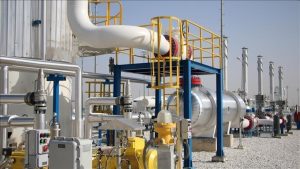Over 50% of Europe’s LNG import capacity risk underutilisation by 2030, experts warn
March 22, 2023697 views0 comments
By Onome Amuge
More than half of Europe’s liquified natural gas (LNG) import capacity could become stranded assets by 2030 as current LNG buildout plans are set to vastly exceed projected demand for liquefied natural gas by the end of the decade, according to the international research organization Institute for Energy Economics and Financial Analysis (IEEFA).
IEEFA, in its recent analysis, noted that the EU, as part of efforts to reduce the dependency on Russian gas and to diversify sources, is boosting its LNG import capacity infrastructure and is ready to welcome even more LNG cargoes this year and in the coming years.
Moreso, the report pointed out that current infrastructure buildout plans suggest that Europe’s LNG terminal capacity could exceed 400 billion cubic meters (bcm) by 2030, up from 270 bcm at the end of 2022.
 Referencing S&P Global Commodity Insights, the report projected that Europe’s demand for LNG is likely to range between 150 bcm and 190 bcm by 2030. This,however leaves a gap of about 250 billion cubic meters of unused capacity, considering the estimated 400 billion infrastructure capacity
Referencing S&P Global Commodity Insights, the report projected that Europe’s demand for LNG is likely to range between 150 bcm and 190 bcm by 2030. This,however leaves a gap of about 250 billion cubic meters of unused capacity, considering the estimated 400 billion infrastructure capacity
IEEFA also forecasts a 36 per cent utilisation rate of Europe’s LNG terminals, including those that are currently being planned and being built, noting that Spain, Turkey, the UK, France, Italy, and Germany are at the highest risk of seeing stranded LNG infrastructure assets at 50 bcm,44 bcm,40bcm,14 bcm, 10 bcm, and 9 bcm, respectively in the year under review.
Ana Maria Jaller-Makarewicz, author of the analysis and Energy Analyst for IEEFA Europe, remarked that the import boost is the world’s most expensive and unnecessary insurance policy, adding that Europe must carefully balance its gas and LNG systems, and avoid tipping the scale from reliability to redundancy.
“Boosting Europe’s LNG infrastructure will not necessarily increase reliability—there’s a tangible risk that assets could become stranded,”Jaller-Makarewicz added.
The analyst noted that over-engineered networks are expensive to build and maintain. Based on this, she advised that decisions to expand Europe’s LNG infrastructure must be based on future demand needs, and take into account that the EU is planning to reduce gas demand by at least one-third by 2030.
